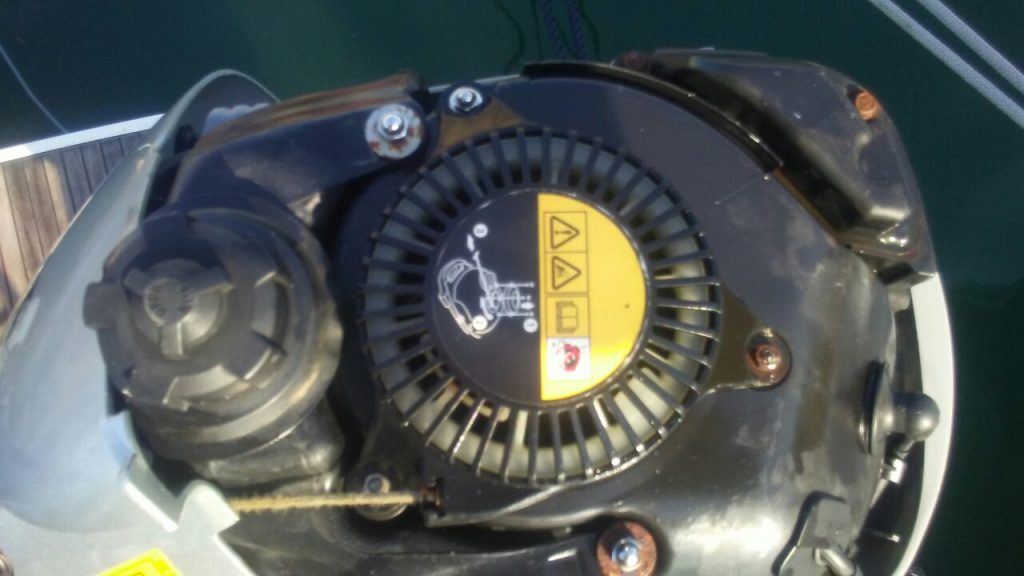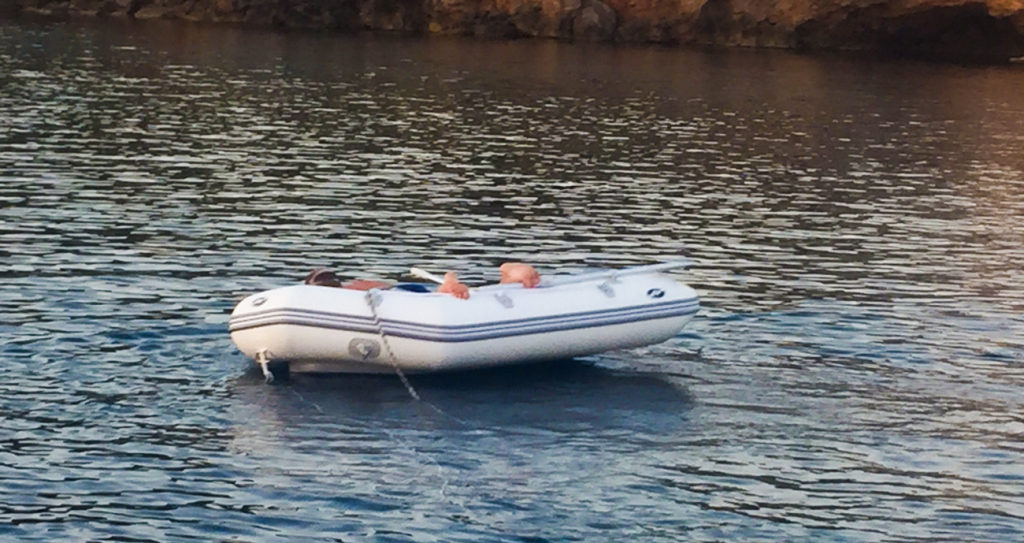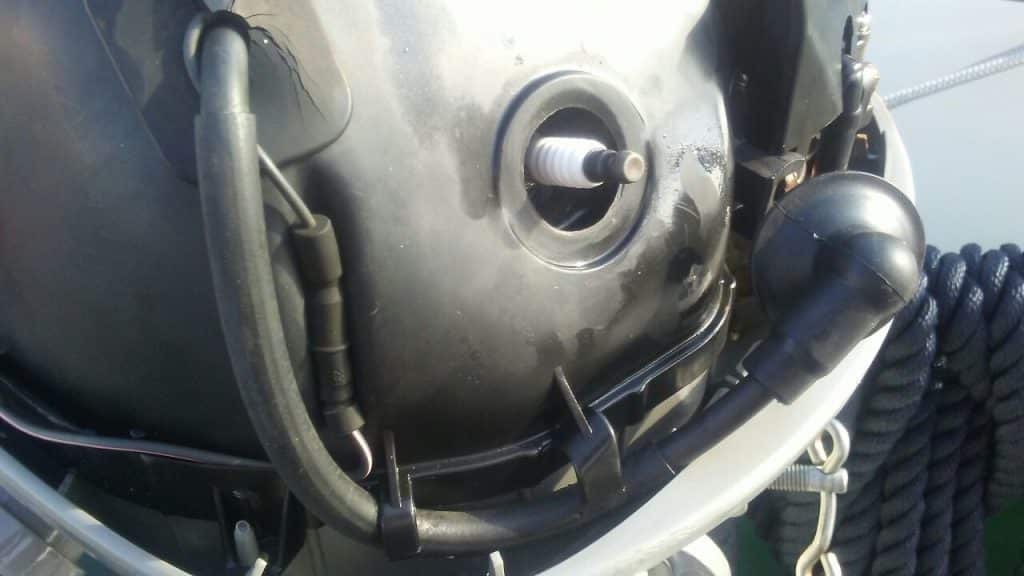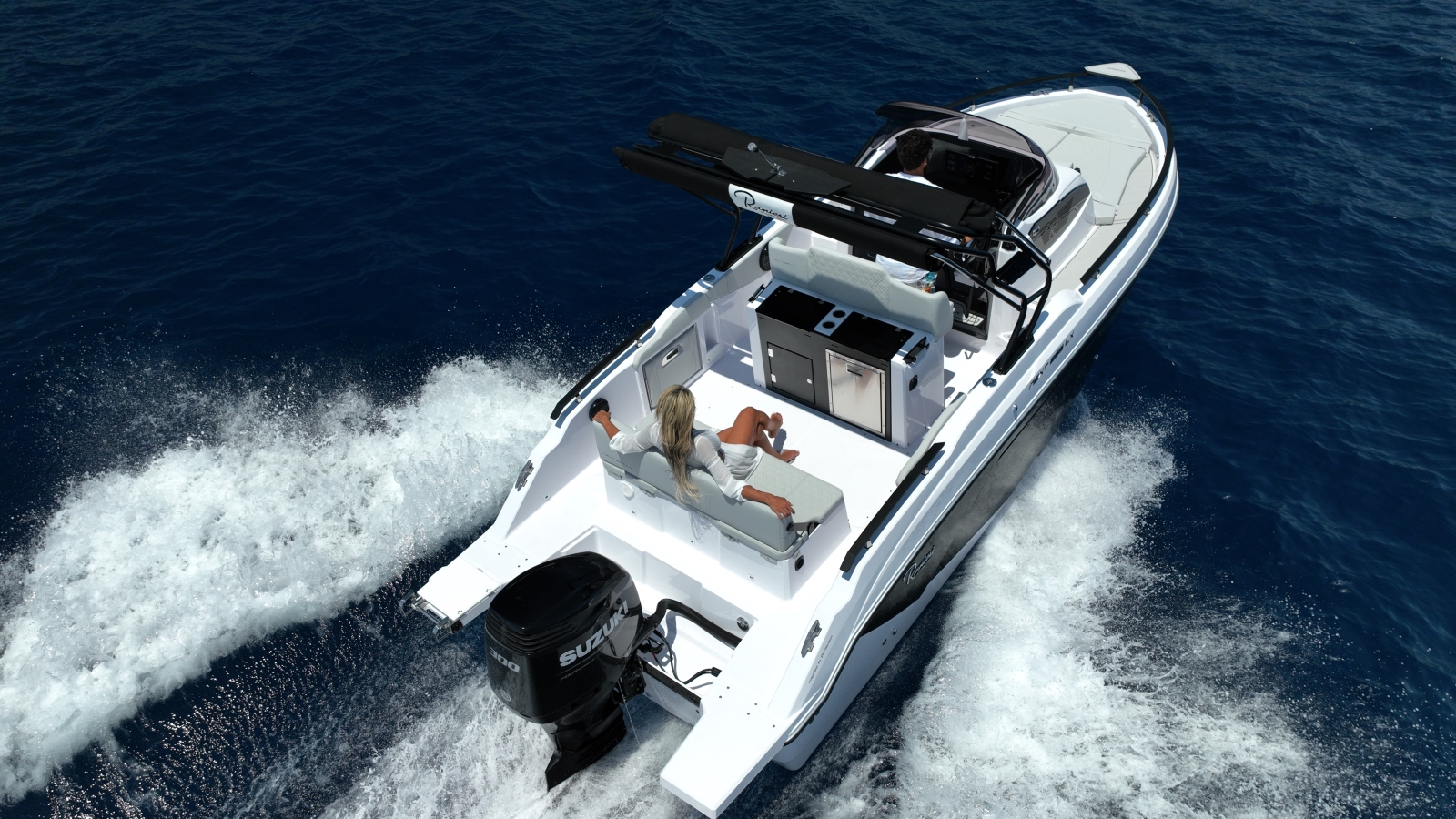Forse la contentezza di essere arrivati dopo una lunga traversata da La Spezia a Ibiza ha innescato una voglia eccessiva di scendere a terra, forse un po’ di stanchezza, fatto sta che l’operazione di spostamento del fuoribordo dal pulpito della barca allo specchio di poppa del tender, è finita nel peggiore dei modi. Il fuoribordo è scivolato e si è inabissato in 7 metri d’acqua sul fondo della baia.

Il problema è che era notte. I pochi minuti trascorsi dal prendere la maschera e buttarsi in acqua, lo spostamento della barca nonostante i punti di riferimento presi a terra e, soprattutto, il buio pesto di una notte senza luna, hanno reso impossibile il recupero immediato. Ed è stato, come avremmo scoperto qualche ora dopo parlando con un meccanico, un bene.
Le operazioni di recupero sono avvenute sette ore dopo, alle prime luci dell’alba, quando in pochi minuti, da bordo del tender, abbiamo individuato, adagiato nelle posidonie, il motore. E’ stato sufficiente immergersi con una cima, farla passare nel manico frontale del fuoribordo, e quindi issarlo velocemente a bordo.
A questo punto si è trattato di fare una corsa in porto dove avremmo avuto abbondanza di acqua dolce con cui lavarlo e avremmo potuto acquistare l’olio di cui avevamo bisogno.

E senza saperlo, il fatto di non recuperarlo subito, si è rivelato una circostanza fortunata. Secondo il meccanico dell’officina in cui abbiamo acquistato una grande quantità di olio per fare i diversi cambi che si sono resi necessari, se lo avessimo recuperato e poi lasciato all’aria qualche ora prima dell’inizio del lavaggio e cambi d’olio, i processi di ossidazione e danneggiamento delle fasce sarebbero stati forse irreversibili.
Il primo preoccupante sintomo che ha inizialmente ridotto le speranze al lumicino, fino al punto dall’essere tentati di rinunicare in partenza, è stato il fatto che il motore sembrava inchiodato. La cordicella della messa in moto non si muovere di un centimetro. In realtà, è stato sufficiente togliere la vecchia candela per farlo girare subito. L’acqua penetrata all’interno, infatti, non era comprimibile, e quindi il pistone risultava bloccato. Una volta aperta la calandra lo abbiamo quindi lavato a lungo con tanta acqua dolce.
Quindi abbiamo aperto il tappo a vite dell’olio e svuotato il serbatoio. Come prevedibile, l’olio era completamente emulsionato e lo abbiamo sostituito una prima volta.

Il serbatoio della benzina era invece immacolato. Il fatto che fossero chiusi sia la valvolina dell’aria che il dispositivo di chiusura sul carburatore, ha preservato il serbatoio interno da infiltrazioni d’acqua. Una volta lavato, irrorato di Crc, sostituito olio e candela, dopo qualche tentativo il motore, raffreddato ad aria, ha ripreso a girare. Ma non era finita.
Abbiamo infatti voluto controllare di nuovo l’olio, procedendo a un secondo cambio. Anche il lubrificante uscito in questo caso era completamente emulsionato. Se avessimo utilizzato il fuoribordo in queste condizioni, l’esito sarebbe stato nefasto.
Il terzo cambio d’olio ci è servito per far girare il motore più a lungo in acqua a diversi regimi di giri per circa un’ora, rabboccando il serbatoio della benzina. Una volta a terra, ultimo cambio d’olio con la verifica della sua perfetta consistenza. Una bella asciugata e pulizia finale, e il fuoribordo è tornato a fare perfettamente il suo dovere.










